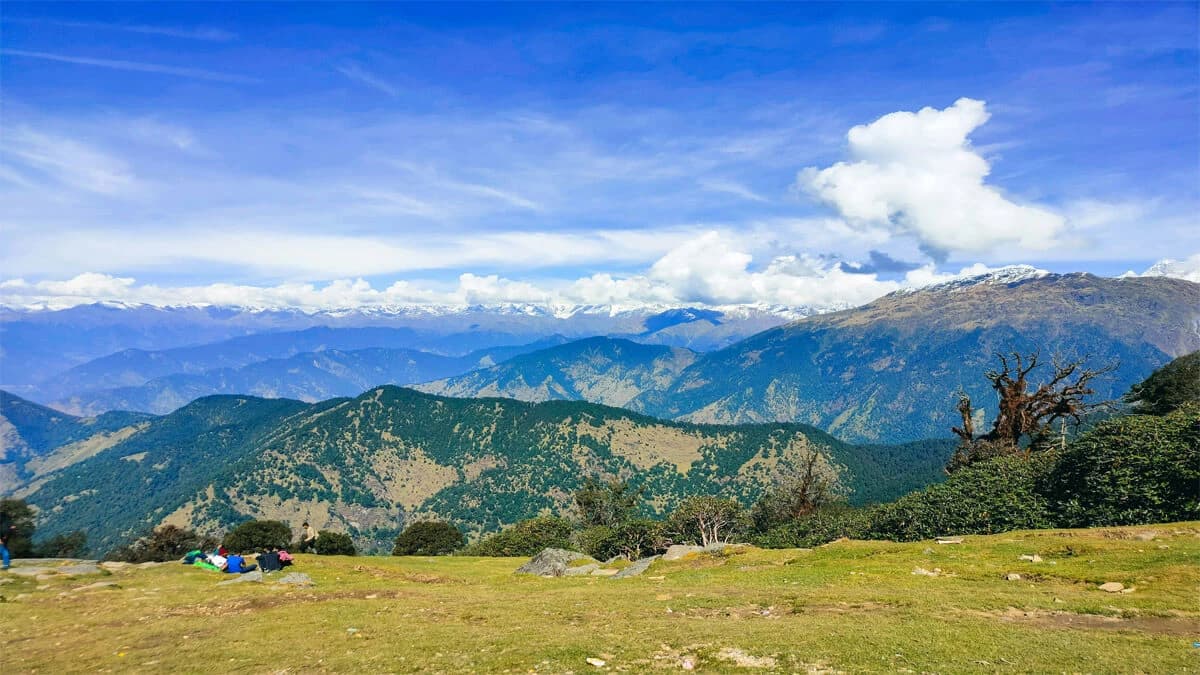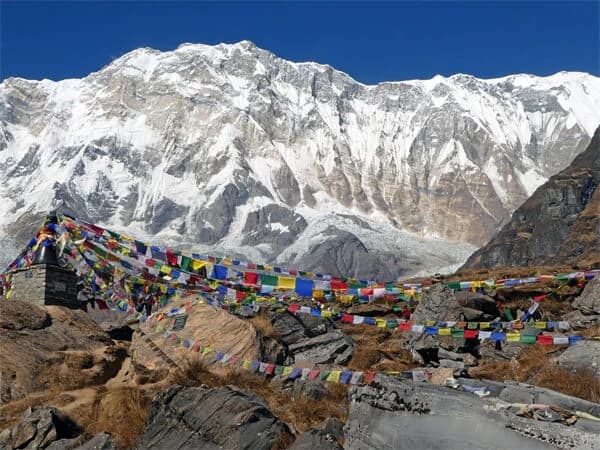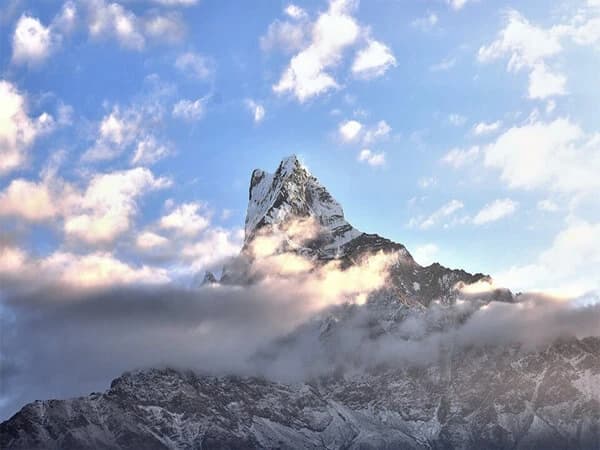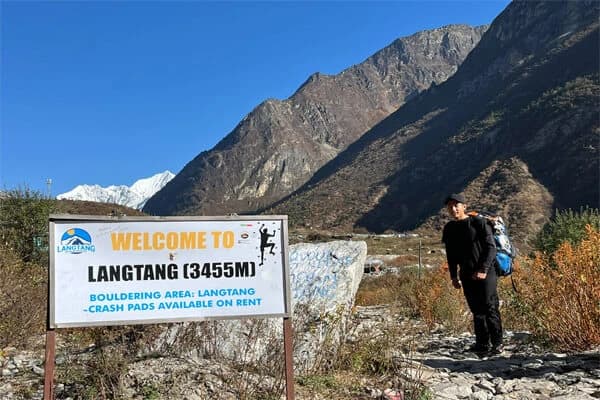Solo trekking in Nepal offers freedom, reflection, and unmatched adventure through the Himalayas. For individual trekkers who plan carefully, well-known routes like Everest, Annapurna, and Langtang are clearly signposted and safe. Securing permissions, being aware of altitude hazards, and packing necessary equipment are all part of preparation. Respect for local culture, fitness, and safety awareness are essential for a fulfilling trip. Trekking alone boosts self-confidence, but in remote locations, using local guides or reliable backup increases security.
Solo Trekking in Nepal: A Safety & Logistics Guide
Have you ever thought about taking a solo trek across the Himalayas, encircled by majestic peaks, beautiful scenery, and the peaceful rhythm of isolated communities? Solo trekking in Nepal offers a unique blend of independence, exploration, and self-discovery. Trekking by yourself gives you the freedom to go at your own speed, discover unknown paths, and completely appreciate the area's natural beauty and cultural diversity. Nepal offers routes for novice, expert, and intermediate trekkers, from the well-known Everest Base Camp to the serene Langtang Valley or the undiscovered paths of Helambu.
The sense of personal development that comes from overcoming obstacles on your own, whether they be lengthy walking days, high-altitude terrain, or erratic weather, is what makes solo trekking appealing. To guarantee a comfortable and enjoyable trip, trekking alone necessitates thorough preparation, which includes fitness training, logistical planning, and safety knowledge.
With its coverage of routes, safety advice, logistics, cultural etiquette, and preparation techniques, this guide aims to assist travelers in understanding the fundamentals of solo trekking in Nepal. You will have the skills necessary to successfully organize a solo Himalayan experience that is safe, fulfilling, and unforgettable by the end of this blog.
Best treks for solo travelers in Nepal
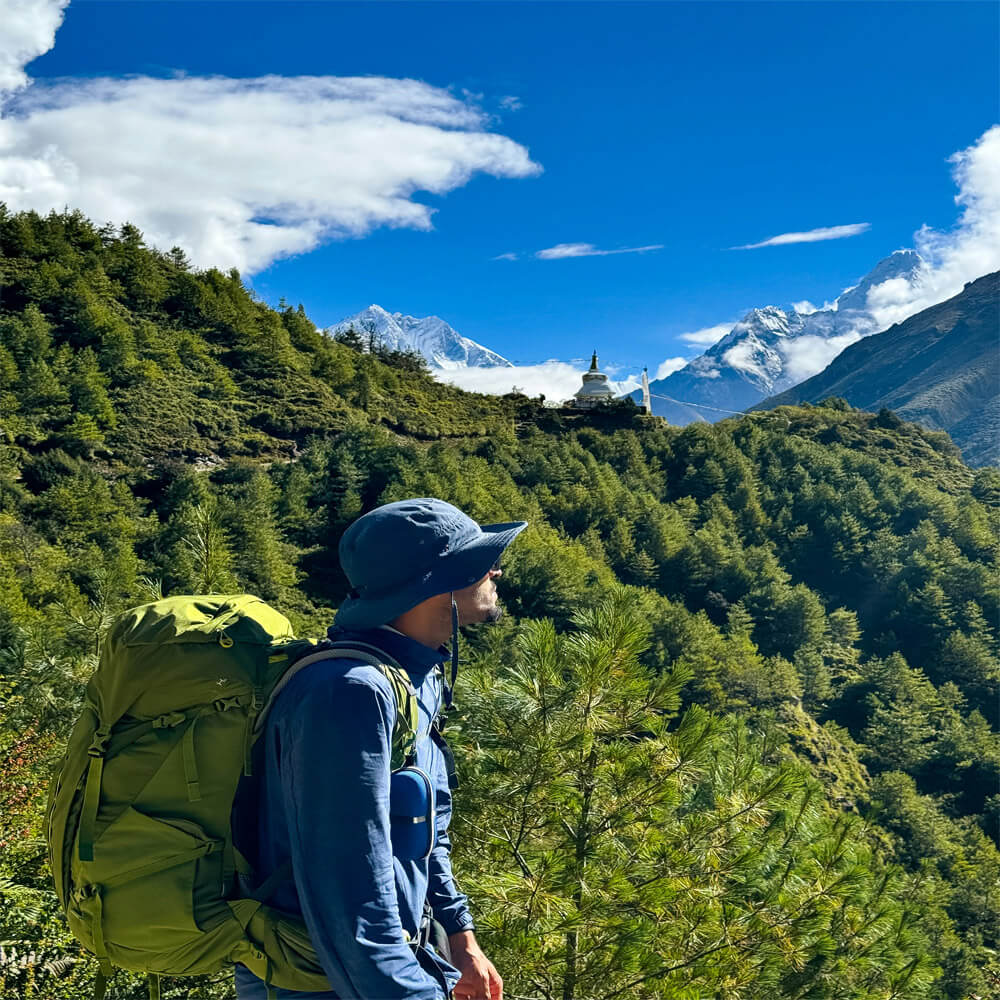
Trekking alone in Nepal can be one of the most life-changing things a tourist can do. There is a sense of freedom and immersion that is difficult to replicate when the Himalayas are visible on the horizon. From beginner-friendly paths to high-altitude, secluded excursions, Nepal's varied trekking regions provide something for every skill level. We examine some of the top choices for solo travel in Nepal Himalayas below, emphasizing the distinctive, secure, and fulfilling aspects of each route.
Everest Base Camp Trek 15 Days
For those trekking independently in Nepal, the Everest Base Camp (EBC) trek is the ultimate expedition. Trekkers begin at Lukla and travel through quaint villages like Namche Bazaar, Tengboche, and Dingboche as they acclimate and steadily gain altitude. You can be flexible when you walk alone here; you can pause when you want to, spend more time at monasteries, or take leisurely pictures. With plenty of teahouses along the route and clearly indicated routes, it is perfect for trekking alone in Nepal yet is still reasonably secure.
Mount Everest, Lhotse, and Ama Dablam are among the unparalleled Himalayan vistas that EBC provides. Solo travelers frequently find the experience to be spiritually fulfilling, taking in peaceful moments amidst breathtaking scenery. Although altitude acclimation is crucial, it is not technically challenging. Although independent trekking in Nepal is feasible for seasoned trekkers, most trekkers opt to employ a local guide or porter for safety.
Annapurna Base Camp & Annapurna Circuit Trekking
The Annapurna region is ideal for solo trekking in Nepal for individuals looking for diversity and cultural immersion. Terraced villages, lush rhododendron forests, and expansive mountain views are all features of the Annapurna Base Camp (ABC) Hiking. The lengthier and more difficult Annapurna Circuit, which offers expansive vistas of Annapurna I, Dhaulagiri, and Machapuchare, is an alternative.
Trekkers can go at their own speed when walking alone in this area, taking breaks to visit nearby villages and engage with the Gurung and Magar people. There are several teahouses, well-established trails, and easily accessible transportation to and from Pokhara, making independent trekking in Nepal easier. Trekking may be a very personal experience for solo travelers, who frequently enjoy the combination of rich culture and scenic beauty.
Langtang Valley Trek
If you are looking for a moderately difficult trip that gets you closer to Kathmandu, the Langtang Valley trekking is perfect for trekking alone in Nepal. It is a great choice for solo travel in Nepal Himalayas because of its alpine forests, glacial rivers, and animals in Langtang National Park. Although the 2015 earthquake had a major impact on the valley, teahouses and trails have returned as a result of rebuilding.
Trekkers on their own relish the isolation as they pass Tamang villages, go to monasteries, and observe traditional ways of life. There is a mix of short and lengthy trekking days, and the route's modest altitude facilitates acclimatization. Here, independent trekking in Nepal can be both rewarding and safe with the right planning.
Helambu & Shivapuri Hills
The Helambu Circuit and the Shivapuri Hills, which are close to Kathmandu, provide easy treks with scenic splendor and opportunities for cultural interaction for novices wishing to go alone in the Nepal Himalayas. These treks are ideal for putting your stamina and knowledge of trekking alone in Nepal to the test because they are shorter, usually lasting three to five days.
With its terraced farming communities and Buddhist monasteries, the Helambu region provides a tranquil setting. The Shivapuri Hills, which are a part of the Shivapuri National Park, offer sweeping views of the surrounding mountains and Kathmandu Valley. There are plenty of lodging options, clearly designated trails, and few trekking permits. The independent trekking in Nepal in these areas is great, especially for those who are going alone.
Manaslu Circuit & Tsum Valley
The Manaslu Circuit Trek and the Tsum Valley Trek are excellent options for solo trekking in Nepal for seasoned trekkers looking for solitude. These paths are more isolated, less congested, and have strong Tibetan cultural roots. As they traverse high passes like Larke La (5,160m) and take in the pristine scenery and historic monasteries, lone trekkers can enjoy the unadulterated splendor of the Himalayas.
Due to restrictions, solo travel in Nepal Himalayas needs permits and frequently a local guide, combining independence and safety. With the help of guided logistics, independent trekkers can enjoy the authenticity of the area without the hassles of big groups. For those who are ready for the hardships of high altitude, these treks provide a genuine sense of adventure, solitude, and introspection.
Solo trekking in Nepal offers an exciting and life-changing experience. For the daring solo traveler, Nepal offers countless chances for Himalayan exploration, cultural immersion, and personal development, from well-known routes like Everest Base Camp to undiscovered treasures like Tsum Valley.
Physical Preparation and Fitness Tips
Building Physical Fitness
It takes endurance to trek in Nepal, especially at high elevations. To get ready, concentrate on cardiovascular exercises that will improve your heart and lungs, such as stair climbing, cycling, or jogging. Strength training is similarly vital because the muscles in your back, legs, and core support lengthy days of trekking uphill with a backpack. In order to replicate trail conditions, beginners should aim for three to five short treks each week, progressively increasing in elevation and distance.
Endurance and Stamina
On solitary adventures, long walking days lasting five to eight hours are typical. Long-distance trekking with a weighted backpack helps build stamina, which prepares the body for prolonged effort. Walking up hills or stairs simulates the uneven terrain and gets joints ready for extended pressure.
Mental Preparation
Trekking alone also puts your mental toughness to the test. Long periods of alone in isolated locations call for patience, self-motivation, and concentration. To improve mental endurance, try visualization exercises, meditation, or even short treks by yourself before you leave.
Acclimatization and High-Altitude Readiness
Altitude may be taxing on the body, even for physically fit individuals. Find out about acclimatization plans and keep an eye out for altitude sickness signs. It is crucial to prepare your body with moderate-altitude treks or to maintain proper hydration, nutrition, and pace.
Solo explorers can safely and successfully traverse the Himalayas by combining mental and physical preparation with knowledge of Nepal's trekking regulations.
Safety tips for trekking in Nepal
Safety is the most important consideration while organizing a solo trek in Nepal. Because of the high mountains, erratic weather, and isolated trails, planning is essential. This comprehensive book offers helpful suggestions and safety precautions for trekking in Nepal to guarantee a fun and safe trip.
High-Altitude Awareness
One of the biggest dangers for trekkers is altitude sickness. Headache, nausea, lightheadedness, and exhaustion are among the symptoms. To avoid issues caused by altitude:
- Plan rest days for acclimatization and ascend gradually.
- Avoid alcohol and drink plenty of water.
- Recognize Acute Mountain Sickness (AMS) symptoms and descend if they get worse.
Weather and Trail Conditions
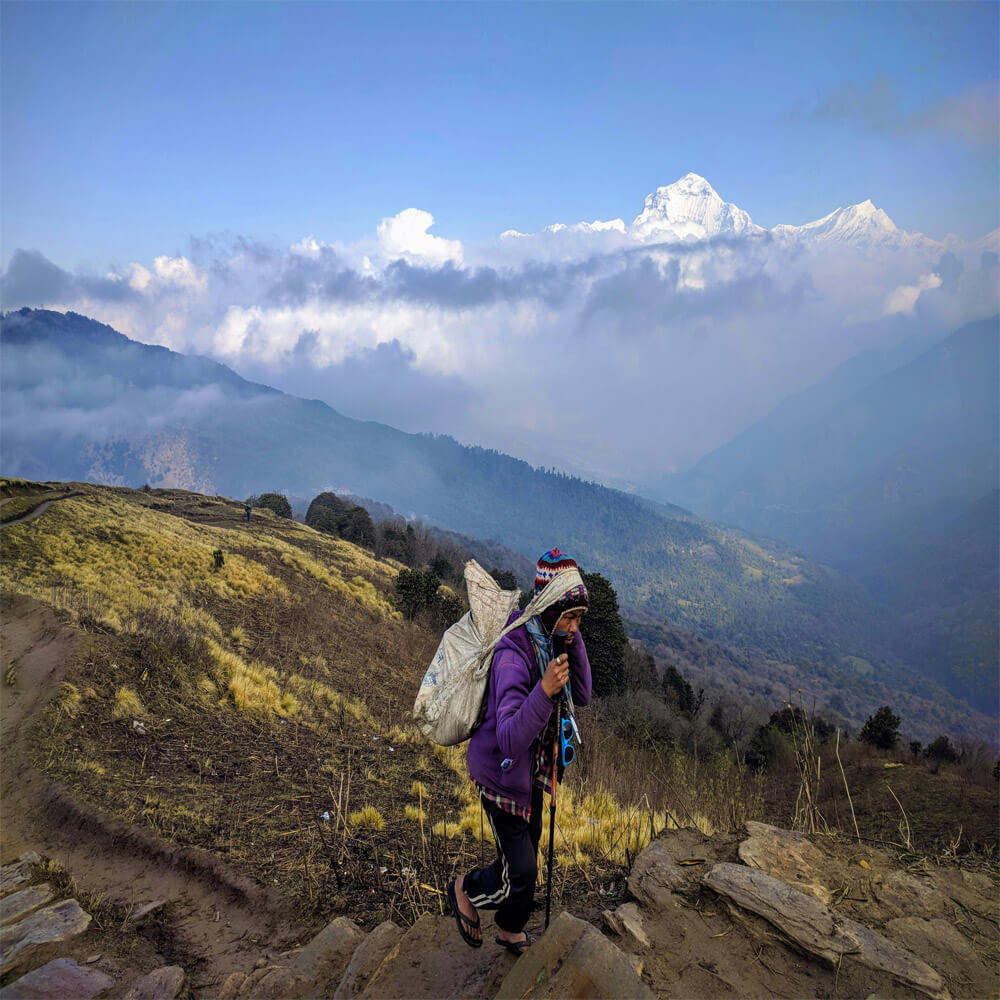
The weather in the mountains can change quickly, bringing with it snow, rain, or high winds. Here are some safety guidelines while trekking in Nepal:
- Every day before you start, check the forecasts.
- Keep layered equipment and waterproof clothes with you.
- If the situation becomes dangerous, be ready to turn around.
In isolated areas, trail dangers including ice patches, unstable rocks, and landslides are frequent. Use trekking poles for support on steep or uneven terrain, stay on designated pathways, and follow your guide's instructions.
Health and First Aid
Being independent is crucial when trekking alone. Suggested safety measures:
- Keep a first aid kit on hand that includes bandages, antiseptic, altitude sickness drugs, and simple pain relievers.
- To avoid infections, practice good hygiene on a regular basis.
- Depending on the area, vaccinations and preventative medications could be required.
Emergency Communication
There may be little mobile connectivity even on well-traveled paths. Trekking safety advice in Nepal suggests:
- In main trekking locations, carry a local SIM card with coverage; in more isolated places, carry a satellite phone.
- Tell your loved ones about your daily itinerary.
- When necessary, particularly in restricted locations, register with the local authorities.
Responsible Solo Trekking Practices
Lastly, always show consideration for the surrounding community and environment. Do not trek alone at night, protect your possessions, and follow your gut. Even for seasoned trekkers, hiring a guide or traveling in small groups can improve safety even more.
Solo travelers can lower risks, take in the breathtaking Himalayan landscape, and create a safe and memorable vacation by adhering to these safety guidelines when trekking in Nepal.
Logistics and Planning for Solo Trekking in Nepal
For a solo trekking trip in Nepal to be both safe and pleasant, careful preparation and logistics are crucial. Trekking on your own can be freeing, but knowing the practical details of permits, lodging, and gear guarantees you are ready for anything.
Solo trek permits in Nepal
Depending on the area, each trekker in Nepal needs a different permit. A TIMS (Trekkers’ Information Management System) card is required for the most well-known treks, such as the Annapurna Circuit and Everest Base Camp. Sagarmatha and Annapurna are examples of national parks and conservation zones that require supplementary access permits. You must have a registered guide and specific restricted area permits if you intend to trek in areas that are off-limits, such as Upper Mustang, Manaslu, or Tsum Valley. Simplifying the process and guaranteeing that you fulfill all legal criteria are two benefits of obtaining these permits through a certified trekking organization.
Accommodation Planning
There are teahouses and lodges along most trekking routes in Nepal. Avoid last-minute stress by organizing your overnight stops in advance, particularly during the busiest trekking seasons (spring and autumn). There can be a shortage of teahouses in some isolated areas, necessitating flexible scheduling or early reservations. Trekkers traveling alone should also think about the comfort and safety of the lodges they choose, selecting those with safe sleeping arrangements and hygienic conditions.
Packing and Supplies
For solo trekkers, packing effectively is essential. Layered clothes for variable weather conditions, durable boots, a sleeping bag, trekking poles, a first aid pack, water purification equipment, and a portable power bank are all necessities. To be ready for lengthy walking days or unforeseen delays, pack a lightweight daypack with water, snacks, and emergency supplies.
Transport and Accessibility
Make plans to travel by air or vehicle to your beginning place, which is typically Kathmandu or Pokhara. Buses or jeeps provide a slower, more picturesque alternative, while domestic flights (such as Kathmandu to Lukla) save time but may be impacted by weather delays. You may prevent logistical stress by being aware of your route, potential transportation connections, and schedule.
Communication Tools
For emergencies, solo trekkers should have a satellite phone, portable Wi-Fi device, or local SIM card with them. When trekking through isolated areas with spotty network service, offline maps and GPS applications come in handy.
Solo trekkers can concentrate on taking in Nepal's breathtaking scenery and cultural experiences without needless stress by carefully organizing permits, lodging, equipment, transportation, and communication.
Hiring guide or porter for solo trek in Nepal
Hiring local assistance, like as porters, guides, or both, can make a solo journey in Nepal safer, easier, and more enjoyable, according to even seasoned trekkers. Although traveling alone might be liberating, Nepal's rough terrain, high elevations, and isolated paths can provide significant difficulties. Local support fills that need by offering both helpful advice and cultural understanding.
Why Hire a Guide
A certified trekking guide serves as your safety net in addition to being your guide. Guides can offer advice on acclimatization to avoid altitude sickness because they are familiar with the trails and the local weather patterns. They take care of logistics like transportation, teahouse reservations, and permits so that lone trekkers can concentrate on the adventure rather than the paperwork. To ensure adherence to government laws, a guide is required in restricted areas such as Upper Mustang or Manaslu.
Benefits of a Porter
Porters lessen weariness and physical strain by carrying bulky loads. Trekkers may now appreciate the view and keep a comfortable pace without worrying about the weight of their equipment. Employing a porter also guarantees the effective management of necessary supplies, such as food, water, and additional clothing, which is especially helpful for multi-day treks with limited funding.
Choosing the Right Support
Choose a guide or porter who is registered with the government of Nepal or a respectable organization such as Nepal Trekking Routes. Verify your language proficiency, experience, and knowledge with the path you have selected. An excellent trekking guide or porter is more than just an aid; they become a part of your journey, offering comfort, company, and cultural knowledge that enhances trekking alone.
Cost Considerations
Porters charge $20 to $25 per day, plus gratuities and daily expenses, whereas guides usually charge $25 to $35 per day. While using assistance raises the total cost of the walk, it greatly improves efficiency, comfort, and safety. This investment frequently pays off for lone trekkers by lowering hazards, preventing logistical hassles, and facilitating a more pleasurable trip.
When Local Support is Essential
- Restricted or isolated treks (Manaslu, Upper Mustang, Upper Dolpo)
- Trails at high elevations exceeding 4,000 meters
- Trekkers who are new to the Himalayan landscape
- Trekkers looking for cultural guidance or carrying large packs
Solo travelers can experience safety and convenience as well as a genuine connection to Nepalese culture, routes, and people by employing local assistance. It turns a difficult trek into a more doable, enlightening, and remarkable Himalayan adventure.
Navigation and Trail Awareness
In Nepal, trekking alone can be very fulfilling, but only if you remain vigilant, cautious, and aware of your surroundings. Even in well-traveled areas, the paths can occasionally be perplexing, particularly after weather changes or in isolated areas with few signboards. Here are some tips for maintaining your safety and confidence when it comes to route awareness and navigation during your experience trekking alone in Nepal.
Understanding Trail Markings
For your guidance, the majority of Nepal's well-known trekking routes, such as the Annapurna Circuit, Everest Base Camp, and Langtang Valley, feature trail markers in the form of painted arrows, flags, or wooden signs. But these can weaken with time or become obscured by foliage or snow. Learn the meaning of these indicators and their appearance before you begin. Because pathways might occasionally change due to landslides or maintenance work, always ask locals or lodge owners for information on the trail for the following day.
Making use of maps, GPS, and apps
Even in the digital age, having a paper map with you is still essential. Paper maps provide you a general idea of the distances, heights, villages, and topography. Add to this with contemporary solutions that provide offline navigation in the event of an internet signal outage, such as Maps.me, AllTrails, or Gaia GPS. Before you leave, download your trekking route, and bring a small power bank so you can keep your electronics charged. You may also keep an eye on your location and progress with the use of GPS trackers or smartwatches with navigation capabilities.
Staying on the Main Route
Numerous trekking routes link local communities in several regions of Nepal. Shortcuts can be alluring, but they frequently result in confusing or dangerous passages. Follow the main trekking route at all times, especially if you are going alone. If you are unsure, ask locals for guidance or wait for other trekkers to show up. Keeping a clear orientation is essential in areas where fewer trekkers travel, such as Manaslu or Nar Phu Valley. It is safer to stick to well-traveled routes and less likely to go lost in isolated valleys.
Relying on Local Knowledge
People who live along the route are frequently the most trustworthy source of navigational assistance. Porters, teahouse owners, and Nepali villagers are all welcoming and eager to help tourists. Acquiring knowledge of some Nepali expressions, such as "Kaha ho?" (Where is it?), can have a significant impact. Simple discussions might help you make sure you are headed in the right direction.
Emergency Preparedness
Even with planning, you may run into trouble with the weather or lose your trail. Before departing, always let your lodgings know where you want to go next. Bring a flashlight, whistle, and emergency contact information, such as the numbers for your embassy and trekking agency. You can avoid panic by remaining composed, going back where you came from, and waiting for assistance close to familiar landmarks.
To put it briefly, learning to navigate when trekking alone in Nepal requires more than simply having the right equipment; it also requires awareness, planning, and a sense of connection to the environment and its inhabitants.
Cultural Etiquette and Community Interaction
Respecting Local Customs
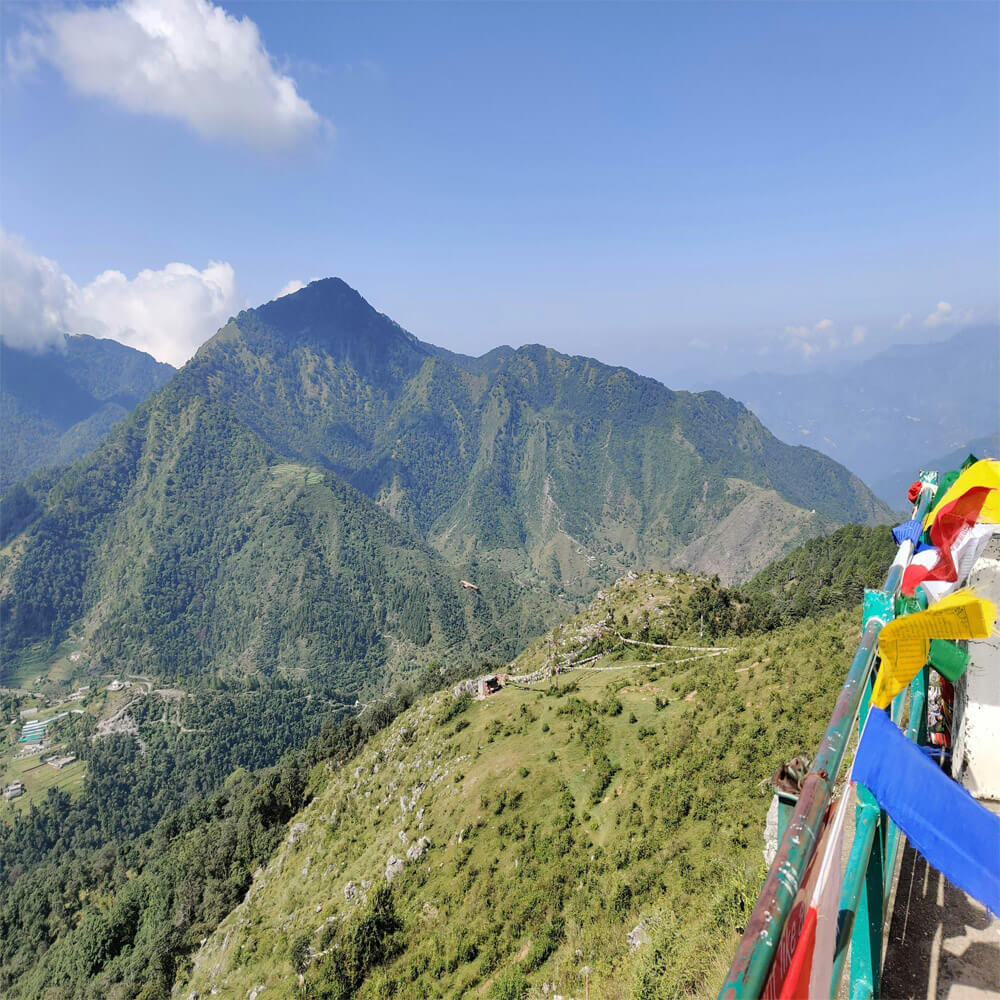
Not only is solo trekking in Nepal about the mountains, but it is also about the people that live there. You will encounter Sherpa, Gurung, Tamang, Thakali, and other ethnic groups along the routes; each has its own customs and beliefs. It is all about respect. Avoid pointing at people or religious objects and always say "Namaste" to natives. Take off your shoes when you enter a house, and accept an invitation to share tea or dal bhat with appreciation. Little acts of kindness, such as supporting teahouses or purchasing locally produced goods, contribute to the sustainability of mountain livelihoods and strengthen your cultural ties.
Awareness of Clothes and Behavior
Being modest is very important in Nepal's rural areas. Trekking gear is acceptable, but stay away from really skimpy attire, particularly around monasteries or villages. Traveling women should wear modest clothing to prevent unwanted attention. Never sit on or touch sacred items while at religious places; instead, round mani walls and stupas in a clockwise direction. Always ask for permission before taking someone's picture; this is especially important for monks or old peasants. These behaviors demonstrate respect for the culture and foster constructive interactions between trekkers and residents.
Language and Communication
Making acquaintances does not need you to speak Nepali well, but knowing a few phrases will help your solitary journey feel more intimate. We always enjoy phrases like "Dhanyabad" (thank you), "Ramro cha" (it is good), and "Sanchai hunuhuncha?" (how are you?). Major trekking locations have a high concentration of English speakers, but in isolated places, smiles and gestures may overcome any language barrier. Locals are typically kind and inquisitive; exchanging tales or discovering more about their culture can transform a brief stopover into a deep and important relationship.
Cultural Sensitivity on the Trails
When you journey alone, you represent not only your nation and the trekking community, but also yourself. During festivals or ceremonies, be conscious of local customs; observe in silence and inquire before taking part. Do not give kids cash or sweets; instead, support neighborhood businesses or community initiatives. Respect the environment and always pack out your rubbish. Being humble and inquisitive can lead to life-changing encounters in isolated Himalayan villages where customs have been upheld for centuries.
Cost and Budgeting for Solo Treks
Understanding Solo Trekking Costs
Solo trek in Nepal can be surprisingly affordable, depending on your route and travel style. You should budget between $30 to $60 each day on average, which includes lodging, food, permits, and local transportation. There are many teahouses along well-traveled routes like Everest and Annapurna, with meals costing $3–6 and lodgings frequently available for $5–10. However, because of few supplies and difficult transportation, costs increase for more isolated treks like Manaslu Circuit trek or Upper Mustang. You may enjoy the journey without worrying about money if you have a good budget.
Permit and Entry Fees
Permits are necessary for any trek in Nepal. For individual trekkers, the TIMS (Trekkers’ Information Management System) card costs around USD 20. Additional fees for conservation or national park admission permits range from USD 30 to USD 40. Treks through restricted areas, such as Upper Mustang, Manaslu, or Dolpo, are more costly and require special government permits that can range from USD 50 to USD 500, depending on the season and duration. Non-negotiable, these expenses are essential for both regional conservation initiatives and legal trekking. For trail checkpoints, always have printed copies of your permits with you.
Accommodation and Food Costs
The core of Nepal trekking culture are teahouses, which are modest, comfortable lodges that provide warmth, food, and a place to relax. Altitude and remoteness have an impact on prices. Meals may cost between $5 and $10 a day in the lower regions, but as one climbs higher, particularly beyond 4,000 meters, transportation expenses can cause prices to double. Wi-Fi, charging devices, and hot showers are typically extras. A small money-saving tip: teahouse proprietors frequently give accommodation discounts if you dine there and sleep there.
Transportation and Route Planning
The distance your expedition begins from Kathmandu determines the cost of transportation. For instance, buses to Pokhara (for Annapurna treks) are far less expensive, costing about USD 10–20 one way, than flights to Lukla (Everest region), which cost about USD 180–200 one way. Trekkers may split the expense of a jeep ride to the Manaslu or Langtang starting locations, which ranges from $150 to $300 USD. Especially for flights over mountains, account for return expenses and allow for any weather-related delays.
Saving Money Without Compromising Safety
While solo trekkers frequently search for ways to cut expenses, it is crucial to maintain safety. Instead than purchasing bottled water, bring your own reusable water bottle and purification tablets. It is less expensive to rent trekking equipment in Kathmandu or Pokhara than to buy brand-new equipment. Selecting off-peak times of year, such as late November or early March, can also save money on lodging. But never forgo adequate insurance, permits, or wholesome food these are necessary for a walk that is both safe and healthful.
Guided Support and Local Services
Hiring a local guide or porter for particular routes might be a wise investment, even for lone trekkers. A porter costs about USD 20 to $25 per day, and a guide costs about USD 25 to $35. They support the local economy and aid in communication, navigation, and altitude control. Trekking company are perfect for lone travelers who desire independence but also dependability because they can manage permits, transportation, and logistics.
Solo Trekking Rules in Nepal for Adventure Travelers
Guides are Mandatory for Foreign Trekkers
Before embarking on any journey, foreign solo trekkers (FITs, or Free Independent Travellers) must employ a certified trekking guide from a recognized agency as of April 1, 2023. Most main routes now prohibit independent trekking without a guide.
Permits and the TIMS Card
Depending on the area, trekkers must get the necessary licenses (park, conservation, or restricted area permits). Solo trekking without a guide will frequently prevent you from obtaining the required permissions, and the TIMS card system that once permitted solo trekking permits has changed. Many routes now require you to go through an agency.
Restricted Areas Have Additional Requirements
In restricted regions like as Tsum Valley, Upper Mustang, Manaslu, Nar Phu, and Upper Dolpo:
- A certified guide is required.
- A minimum of two foreign trekkers per permit is required in some areas.
Guide Qualifications
Official licensing and registration with the Nepali government are prerequisites for guides. They might have to demonstrate their first aid, safety, and high-altitude trekking certifications. Registering is also required for agencies that provide guides.
Exemptions & Local Variations
Some of these guide/solo-trek restrictions are often not applicable to Nepali people.
Certain routes or local governments might have slightly different permit or enforcement systems (for example, the KPL Permit in the Everest region may occasionally replace TIMS). But these variations are subject to change, so always verify locally.
Solo trekking in Nepal FAQs
Is Solo Trekking Allowed in Nepal?
Yes, the majority of Nepal's trekking routes, including well-traveled ones like the Annapurna Circuit, Langtang Valley, and Everest Base Camp, permit solo trekking. However, trekkers must accompany a certified guide in order to enter several restricted areas, including Tsum Valley,Upper Mustang, and Upper Dolpo. Solo trekkers must get the required permits, such as national park admission passes and TIMS (Trekkers’ Information Management System) cards, even on open routes. Being aware of the rules in advance guarantees that the trek will be stress-free, safe, and legal.
Is solo trekking in Nepal safe?
Yes, it’s generally safe if you stay on marked trails, check weather forecasts, and trek during the main seasons (spring and autumn). Always carry maps, GPS, and emergency contacts.
How much does solo trekking cost?
Costs vary by region but usually range between USD 30–60 per day, covering accommodation, food, and permits.
Should I hire a guide or porter?
Hiring a guide enhances safety, navigation, and cultural experience. Even solo trekkers can benefit from Nepal Trekking Routes’ experienced local guides.
Conclusion: Solo trekking in Nepal
Solo trekking in Nepal is a deeply personal adventure, an experience that pushes you to the edge and rewards you with isolation, self-discovery, and spectacular beauty. Every step, from the serene paths of Langtang to the majestic summits of Everest, instills courage and patience. Safety must, however, always come first. A smooth trip is ensured by careful preparation, awareness, and respect for the local way of life. Being ready for weather, altitude, and logistics makes a big difference, whether you go alone or with little assistance. Nepal Trekking Routes provides direction, permit assistance, and dependable on-ground support to strike a balance between independence and safety. This way, you may boldly explore Nepal's mountains knowing that professional aid is only a phone call away.

